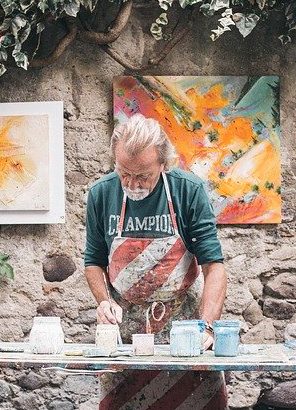For the second blog in my “It’s All In The Detail” series, I’m turning my attention to the artists themselves.
They say every picture tells a story but what about the story behind the pictures? When you spend as much time framing artwork and objects as I do, your mind is often drawn to the person who created the work in the first place.
We’re probably all familiar with the eccentricities of the likes of Vincent Van Gogh. More modern artists, such as Banksy, Tracy Emin and Damien Hurst are colourful characters who’ve attracted interest in their lives and thought processes as a result of ground-breaking work. But what about some lesser known tales?
Salvador Dali and the restaurant tantrum
Take Salvador Dali, for example, flamboyant to say the least but also, according to this tale, ahead of his time. In a scene more reminiscent of today’s modern living art, Dali was dining in his usual restaurant in his birthplace of Figueres, Spain (somewhere he frequented, sitting in the same seat, for over 60 years). On this occasion he’d asked to be seated at a different table. Having ordered fish soup, he suddenly jumped up, smashing the plate and shouting “I’m Dali!” It smashed and red soup flew all over the place and, after a few moments of embarrassed silence, Dali started to collect the pieces of the plate and sign them, handing them out to the other delighted guests. This final act seemingly transformed his unexplained outburst into its very own piece of art.
Claude Monet and his ‘attention to detail’
Like many artists of his time, Monet suffered with cataracts. As his vision blurred and colours lost their hue, he reluctantly agreed to have treatment (something which came with more than a little risk in those days). Thankfully he recovered but records show his doctor believed he had developed the ability to see UV light as a result of the operation. This is thought to be a major factor in what differentiates his style and makes his paintings so recognisable. He wasn’t painting what he saw, but instead the way the light enveloped those objects. His alternative approach to painting didn’t make him any less of a perfectionist though, with reports that he once employed a gardener to go out onto his pond every morning and dust the waterlilies before he would even consider putting brush to canvas.
Tamara de Lempicka and her supreme confidence
A lesser-known but no less renowned Polish-American artist by the name of Tamara de Lempicka began her career by the age of 12. Having sat for a famous painter, she hated the resulting portrait and was convinced she could do a better job herself. She went on to create her first ever picture, of her sister Adrienne, and went on to become a famous art deco painter.
There’s no doubt that with great talent comes eccentricity and a total lack of fear in showing your true self to the world. If you know of any other amazing artist anecdotes, I’d love to hear them.




